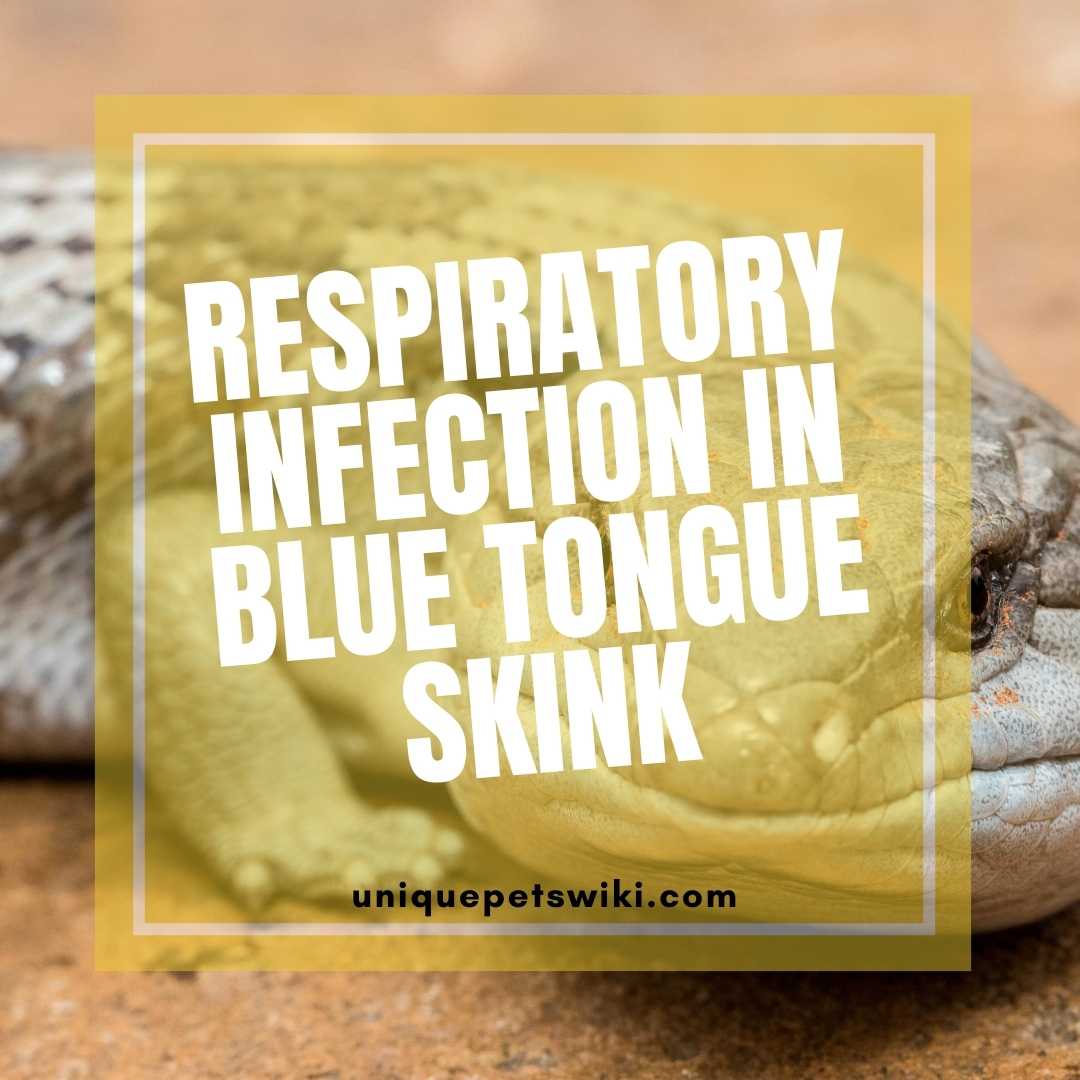It can be fun to own a blue tongue skink. However, it comes with responsibilities. Inadequate heating, improper cage setup, and sanitation can cause your blue tongue skink health issues like a respiratory infection.
It can be difficult for a new owner to know when their blue tongue skink is experiencing respiratory infection. Thus, we came up with this article, to tell you the signs and symptoms of respiratory diseases in blue tongue skinks, as well as the causes and treatment.
This article has been reviewed by Dr. Dilber. Read more about our knowledge control process here.
Contents
- What is Respiratory Infection in Blue Tongue Skinks?
- Signs and Symptoms of Respiratory Infection in your Blue Tongue Skink
- Not all of Above Symptoms are Respiratory Infection’ signs
- Why Your Blue Tongue Skink Got a Respiratory Infection?
- How to Treat a Respiratory Infection in Blue Tongue Skink
- Wrapping Up
What is Respiratory Infection in Blue Tongue Skinks?
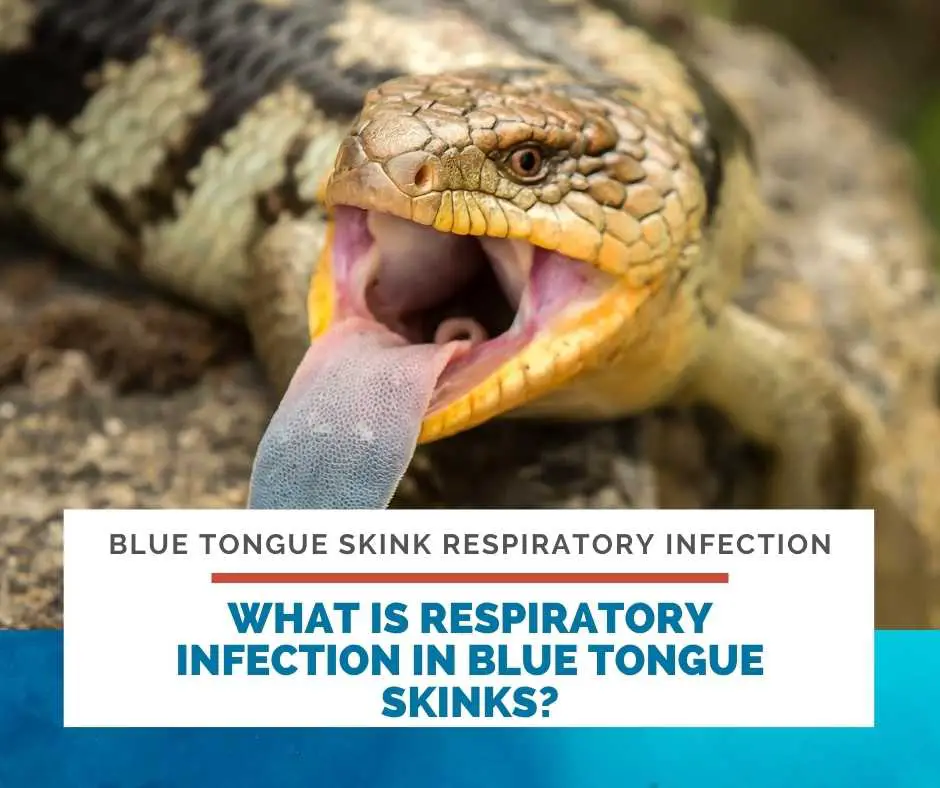
Respiratory infection or RI can be described as reptile pneumonia due to bacterial infection in the lungs. Respiratory infections in blue tongue skinks can be fatal.
Thus, you should ensure that you prevent your blue tongue skink from contracting those infections as much as you can.
Luckily, blue tongue skinks do not easily contract respiratory infections if you keep them in good condition. Proper diet and habitation will go a long way in preventing your blue tongue skinks from health issues.
Even so, sometimes they still get respiratory infections. It is not easy to tell when your blue tongue skink is suffering from respiratory infections.
However, if you are observant about your blue tongue skink normal behavior, it becomes much easier to notice when those issues occur.
Blue tongue skinks, just like most other reptiles, they make a purring noise when breathing. It is a natural process for them while they are clearing their breathing track.
They also do sneeze a lot when clearing the track. Even so, purring and sneezing can still be as a result of respiratory infections.
Therefore, it would be great to observe any change in their normal breathing and sneezing. Let’s now look at other signs and symptoms of blue tongue skink respiratory infection.
Signs and Symptoms of Respiratory Infection in your Blue Tongue Skink
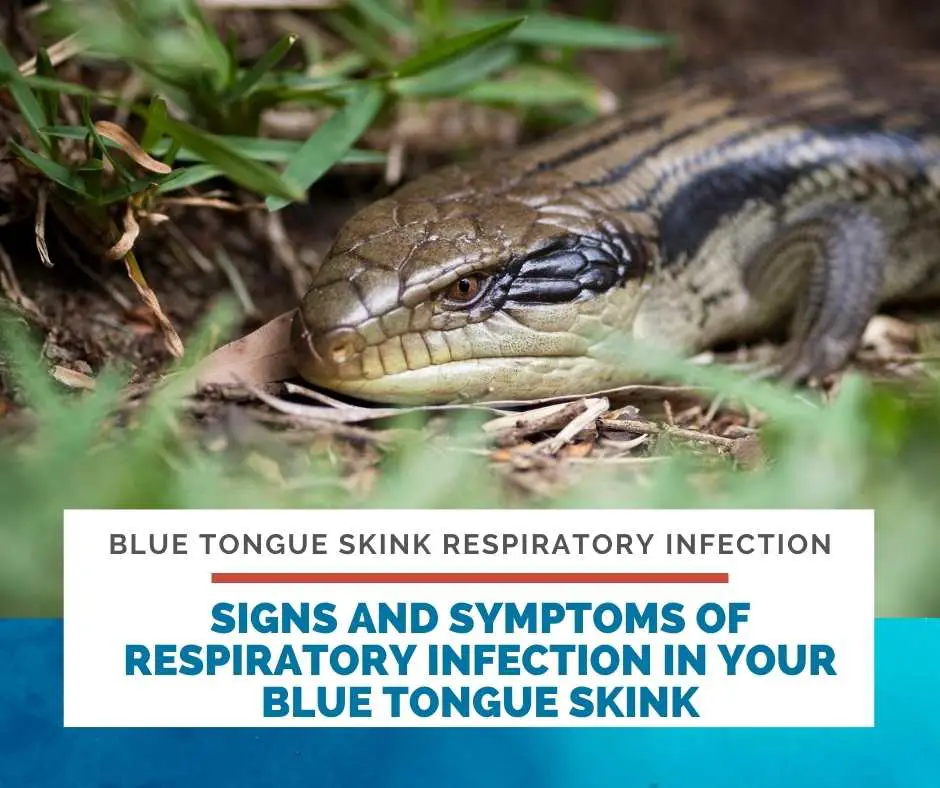
Like we mentioned earlier, it is not an easy task to tell when your blue tongue skink is suffering from respiratory infection.
Some of the symptoms, such as sneezing and purring, can be either a normal behavior or signs and symptoms of respiratory infections in blue tongue skinks.
New to blue tongue skink? Check out the blue tongue skink care sheet now! We had listed out all the things you need to know about blue tongue skinks as pets. Check it now!
Therefore, it is critical to observe other signs and symptoms before concluding that your blue tongue skink is suffering from respiratory infections.
Those other signs and symptoms include;
- Lack of appetite
- Difficulty in breathing
- Excessive saliva
- Breathing with mouth open
- Wheezing
- Your blue tongue skink raising its head when breathing
- Sneezing
- Purring
- Puffy appearance
- Nose discharge and mouth bubbles
- Open mouth breathing
- dull eyes
- opening eyes too much while breathing.
If your blue tongue skink shows all or some of the signs above, you should seek medical attention from your pet vet.
Not all of Above Symptoms are Respiratory Infection’ signs
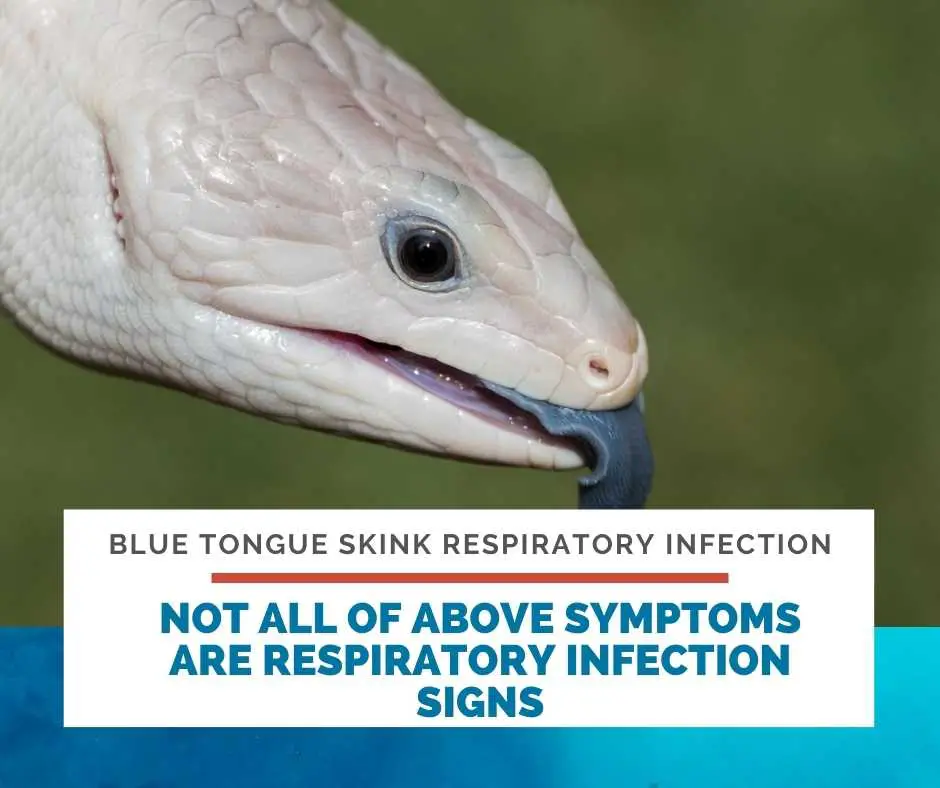
You should note that some of these symptoms can be your blue tongue normal behavior or the indicator that you are using the wrong substrate.
Also, it is normal for blue tongue skink to form saliva bubbles in their mouth. However, if those bubbles are excessive and frothy, it can be an indication of respiratory infection.
Now that you know how you can tell if your blue tongue skink is suffering from a respiratory infection, let’s now see what causes them.
Why Your Blue Tongue Skink Got a Respiratory Infection?
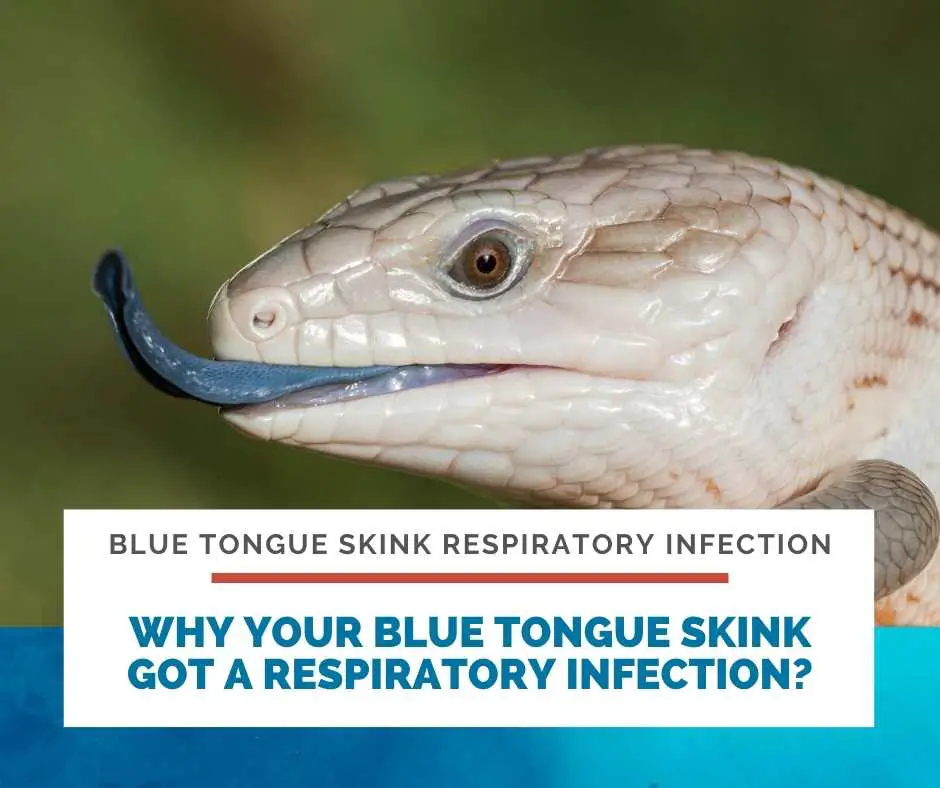
There are several reasons why your blue tongue skinks can contract respiratory infections. Those reasons include:
- Low temperatures in their habitat
- Low immune system
- Too much humidity in your blue tongue skink’s cage or wet substrate
- Stress
- Poor diet
- Deficiency in vitamins and minerals
Respiratory infections also occur due to presence of dirt in the cage that causes the entry of infectious bacteria into respiratory tract. As a result bacteria start multiplying in the mucosal and epithelial cells and cause infection.
Those are the causes of respiratory infections in blue tongue skinks. However, low temperature and high humidity are the primary causes of respiratory infections in blue tongue skinks.
Low Temperatures
You should provide your blue tongue skink with adequate temperatures in their habitat. Blue tongue skinks are cold-blooded animals that require ambient temperatures to keep their bodies warm.
Therefore, you should ensure that you include a thermo gradient temperature in your blue tongue skink enclosure.
The hot side of the enclosure should have a temperature ranging between 95-1050F, while the cool side should be 70-800F during the day.
It’s okay to let the temperature in the blue tongue skink’s enclosure go down at night. However, it should not go below 700F. Temperatures that go below the required range can cause your blue tongue skink to contract a respiratory infection.
Therefore, if the temperature goes below 700F, you should consider using a ceramic heat emitter.
Additionally, you should also consider using a digital thermometer to ensure that your blue tongue skink cage’s temperature is ideal.
High Humidity Levels
High humidity levels are another primary cause of respiratory infections in blue tongue skinks. Thus, it is critical to ensure that you provide an ideal humidity for your blue tongue skink.
Low humidity can cause inadequate shedding, while high humidity levels can cause respiratory infection. Therefore, it is critical to understand how much moisture your blue tongue skink will require.
Most of the bacteria multiply and in moist conditions and high humidity is favorable for them. So, a skink living in highly humid area is susceptible to bacterial infections.
Humidity levels for blue tongue skink depend on the skink’s species. Therefore, it is critical to know your species before providing humidity levels for them.
New to blue tongue skink? Check out the blue tongue skink care sheet now! We had listed out all the things you need to know about blue tongue skinks as pets. Check it now!
Here is a table showing the required humidity percentage for each species of the most petted blue tongue skinks.
| Species | Humidity levels required |
| Merauke | 60-80% |
| Classic Indonesian | 60-80% |
| Halmahera | 80-100% |
| Kei Island | 60-80% |
| Centralian | 20-40% |
| Blotched | 40-50% |
| Tanimbar | 60-80% |
| Northern | 40-60% |
| Eastern | 40-60% |
| Shingleback | 20-40% |
| Irian Jaya | 60-80% |
To keep the moisture levels in your blue tongue skinks ultimate, remember to use a digital hygrometer.
Now that you know what is likely to cause respiratory infections to your blue tongue skink, remember to observe and provide proper habitat and diet to keep them strong and healthy.
How to Treat a Respiratory Infection in Blue Tongue Skink
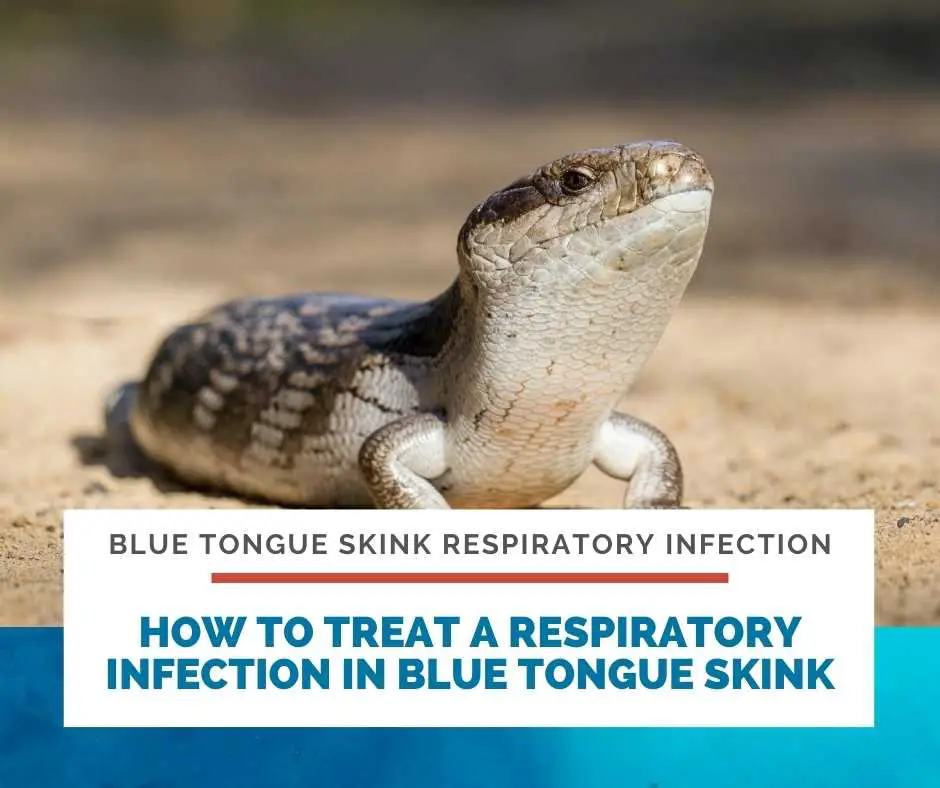
If you suspect that your blue tongue skink is suffering from a respiratory infection, you should:
- Raise your blue tongue skink cage temperature
Like we mentioned earlier, low temperature is the primary cause of blue tongue skink respiratory infections. Thus, you should ensure that you raise the warmth in your blue tongue skink enclosure.
To help your blue tongue skink reduce the respiratory infections, you can raise the hot spot temperature to 1050F, cool spot to 800F, and 75-800F at night.
You should also ensure that you avoid bathing your blue tongue skink during this period or use warm water and dry it before returning it to the tank.
- Proper sanitation or hygiene
Improper sanitation is another cause of respiratory infections in blue tongue skinks. Therefore, you should ensure that you clean your blue tongue skink’s cage regularly with a reptile-friendly spray.
You should also clean your blue tongue skink’s food and water bowls with soap and water after each use. You should also change the drinking water every day or immediately, it gets soiled.
- Seek medical attention from your pet’s vet
Respiratory infections can be fatal to blue tongue skinks. Thus, it is necessary to consult your pet’s vet as soon as you suspect that it could be suffering from respiratory infections.
You can also try using antibiotics to treat your blue tongue skink, but if it does not get better in two days, kindly seek your vet’s advice.
- Isolate or quarantine your blue tongue skink
Respiratory infections are contagious. Thus, you should ensure that you house your blue tongue skink individually to prevent the spread of diseases to other reptiles.
Wrapping Up
Respiratory infections are common health issues in blue tongue skinks. Thus, it is your responsibility as a pet owner to provide a healthy and happy life to your blue tongue skink. To make this possible, you must be aware of the things that cause ill health and stress.
We have discussed respiratory infection causes, symptoms, and treatment in this article. Therefore, it is up to you now as a pet owner to ensure that your blue tongue skink is free from those infections by preventing and treating them whenever they occur.
All the best as you keep your blue tongue skink healthy and happy.
